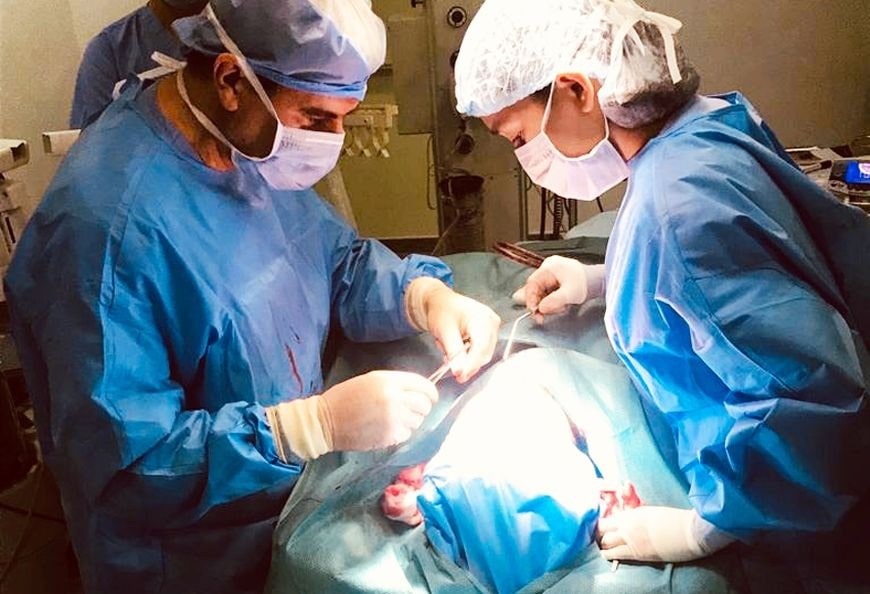Here are some interesting facts about rhinoplasty that you likely didn’t know…
Rhinoplasty, more commonly known as Nose Job, involves using various techniques to reshape the proportional properties of the nose.
It’s done either to change its size (making it bigger or smaller); its shape (most commonly the tip or bridge); to reduce the distance between nostrils (alar resection); or to change the angle between the nose and upper lip. Rhinoplasty is one of the most routinely performed facial plastic surgeries, and is frequently performed for people who either have difficulty with nasal breathing, have suffered a trauma to their nose, or simply wish to improve the shape of their nose for cosmetic reasons and to achieve facial balance and harmony. But unfortunately, Rhinoplasty is also a plastic surgery procedure that has a great deal of misinformation swirling around it.
Rhinoplasty can enhance your appearance and self-esteem. But prior to having any surgery, think carefully about your expectations – they must be realistic. The goal of rhinoplasty is an improvement, not perfection, in the way you look. The ideal candidate is someone who is physically healthy, psychologically stable, and realistic in his / her expectations.
One of The Most Challenging Cosmetic Surgery Procedures

Subtle changes in anatomy of the nose often make profound transformations in One’s appearance, making Nose Reshaping, one of the most challenging yet elegant procedures in plastic surgery. Although Rhinoplasty is a complex procedure, it is still one of the most frequently requested aesthetic procedures.
It’s All About Shape and Function

Rhinoplasty requires careful analysis of a patient’s concerns, detailed planning and a meticulous operating technique. The specific nasal problems must be thoroughly assessed in order to understand a patient’s likes and dislikes about their nose. Both external and internal examinations of the nose are also necessary so as to comprehend the complex three-dimensional nasal anatomy and to clearly define the aesthetic and functional problems. Although there are specific nasal surgeries such as Septoplasty or Sinus Surgery that are designed to treat the functional issues of the nose, Rhinoplasty is a procedure that can be performed to correct issues of both shape and function.
A Highly Personalised Procedure

Rhinoplasty is more than just one type of operation; it consists of several techniques which can be employed to reshape various proportional properties of the nose. Each technique has its advantages and disadvantages and these, along with the wishes of the patient, determine the surgical approach. The surgery can improve the way your nose looks by reducing or increasing its size, by filling in a divot or removing a hump, or by setting a crooked nose straight. But it can also be performed for “functional” reasons, such as to improve breathing difficulties or to correct an injury that happened through trauma. Every individual’s nose is unique, thus it requires a personalised treatment plan.
There are many different ways to perform a bespoke rhinoplasty surgery, which means your surgeon will tailor the treatment plan to meet your needs. It can for example mean that you have a combined rhinoplasty and septoplasty to correct a deviated, or crooked septum at the same time as improving the shape of your nose. It can also mean that your plastic surgeon decides to do an open rhinoplasty instead of a closed procedure, or recommends an alar resection to reduce the width of your nose to achieve optimum results.
The Importance of Initial Consultation

When considering Rhinoplasty surgery, or any other surgery or procedure for that matter, a thorough consultation is necessary, you should be able to discuss your concerns and goals with wanting surgery, and also be fully assessed and be informed of your options, the implications and limitations of surgery and the type of results to expect.
Aftercare is as Important as the Surgery Itself

Many the post-surgical care is as important as the actual surgery. When planning for a Rhinoplasty, most people spend their energy thinking about the surgery itself and how soon they can return to work or resume normal life and the days and weeks immediately following surgery, are typically an afterthought. But proper aftercare is a critical part of the overall process and taking the right precautions and following your plastic surgeon’s guidance and post-op instructions can make a world of difference in your recovery and even results.
Routine follow up appointments are not optional and should be attended as scheduled. It is during these appointments that the healing process is evaluated, and sometimes possible complications can be prevented by taking necessary measures at these appointments.
Rhinoplasty – “A Summary”
With any Cosmetic Surgery Procedure, gathering the right information, knowing your reasons and having a clear expectation about what’s next, and what to expect in terms of outcome, will help you make an informed decision. The decision should be yours, and yours alone; and this should be founded upon appropriate advice from a highly experienced plastic surgeon. Here we shared some Interesting facts about Rhinoplasty that hopefully you found useful. If you are still considering having a Rhinoplasty, then next step would be a Thorough Consultation with an Experienced Plastic Surgeon to help you understand the procedure in more detail and to discuss your options with you.






